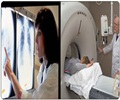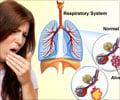It was thought that filter cigarettes which have holes were comparatively safe but they are worse than the usual ones.

- The most common type of lung cancer, called adenocarcinoma, has increased over the last 50 years despite the reducing number of smokers. //
- The reason is nailed down to the ‘light’ cigarettes marketed by the tobacco industry as a "healthier" option.
- These low tar cigarettes have filter ventilation holes, which allow smokers to inhale more smoke that also has higher levels of carcinogens, mutagens and other toxins.
"Light" cigarettes have no health benefits to smokers and have likely contributed to the rise of a certain form of lung cancer that occurs deep in the lungs.
Researchers at The Ohio State University Comprehensive Cancer Center - Arthur G. James Cancer Hospital and Richard J. Solove Research Institute (OSUCCC - James) and five other universities/cancer centers confirmed what tobacco-control researchers have suspected for years.
There is no health benefit to high-ventilation (light) cigarettes - long marketed by the tobacco industry as a "healthier" option - and these cigarettes have actually have caused more harm. Holes in cigarette filters were introduced 50 years ago and were critical to claims for low-tar cigarettes.
"This was done to fool smokers and the public health community into thinking that they actually were safer," says Peter Shields, MD, deputy director of the OSUCCC - James and a lung medical oncologist.
FDA Should Ban Low Tar Cigarettes
Current regulations ban tobacco companies from labeling and marketing cigarettes as "low tar" or "light." Study authors, however, say that given this new data, the FDA should take immediate action to regulate the use of the ventilation holes, up to and including a complete ban of the holes.
"The FDA has a public health obligation to take immediate regulatory action to eliminate the use of ventilation holes on cigarettes," adds Shields.
"It is a somewhat complicated process to enact such regulations, but there is more than enough data to start the process. We believe that such an action would drive down the use and toxicity of conventional cigarettes, and drive smokers to either quit or use less harmful products. There are some open questions about unintended consequences for enacting a ban, which provides for an important research agenda."
Adverse Impact of Filter Ventilation
A team made up of lung oncology, public health and tobacco regulation researchers conducted a comprehensive, multi-faceted analysis of existing literature that included chemistry and toxicology studies, human clinical trials and epidemiological studies of both smoking behavior and cancer risk. They studied scientific publications in the peer-reviewed literature and internal tobacco company documents.
Researchers hypothesized that the higher incidence rates of lung adenocarcinoma were attributable to the filter ventilation holes, which allow smokers to inhale more smoke that also has higher levels of carcinogens, mutagens and other toxins.
"The filter ventilation holes change how the tobacco is burned, producing more carcinogens, which then also allows the smoke to reach the deeper parts of the lung where adenocarcinomas more frequently occur," explains Shields.
To date, all the scientific evidence involves the adverse impact of adding ventilation, but not removing it. Additional research is needed to confirm that the addictiveness of the cigarette or toxic exposures from cigarettes would not increase with elimination of the ventilation holes.
The OSUCCC - James and researchers at the University of Minnesota, Roswell Park Cancer Institute, Virginia Tech, Harvard University and Medical University of South Carolina are conducting additional research to reconcile human biomarkers studies and smoke distribution/exposure in the lung.
Reference
- Peter Shields et al., Rise in lung adenocarcinoma linked to ’light’ cigarette use, Journal of the National Cancer Institute (2017).
Source-Medindia















